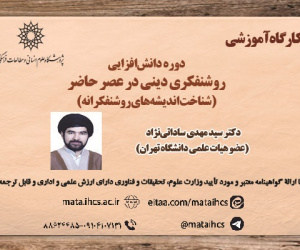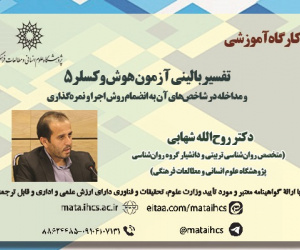تحولات دین داری و آینده حکمرانی دینی (مقاله پژوهشی حوزه)
درجه علمی: علمی-پژوهشی (حوزوی)
آرشیو
چکیده
بررسی مداوم تحولات عرصه دین داری و تأثیر گذاری های احتمالی آن بر حکمرانی دینی برای ایران معاصر بسیار اهمیت دارد؛ زیرا در حکومت دینی بُعد مهمی از مشروعیت بر اساس باورها و علقه های مردم قوام یافته است و هرگونه دگرگونی در انگاره های دینی بر نوع تلقّی عمومی از مشروعیت نظام بسیار تأثیرگذار است؛ از این رو هدف این مقاله بررسی نسبت میان تحولات عرصه دین داری با مبانی و روندهای حکمرانی دینی است. دین داری مانند هر پدیده دیگری در طول زمان و تحت تأثیر عوامل متعددی نزد اقشاری از جامعه، شکل و شمایل گذشته اش را از دست داده و به لسان و لباس جدیدی در آمده است. پرسش اساسی این است که تحولات عرصه دین داری چه نوع تأثیراتی بر آینده حکمرانی دینی در ایران خواهد داشت؟ برای پاسخ به این پرسش لازم است به این پرسش ها نیز پرداخته شود که طی چهار دهه گذشته اهمیت اجتماعی دین چه روندی یافته است و دینداران با چه سبک و رفتاری، دین داریشان را بروز می دهند؟ پژوهش حاضر می کوشد با بررسی چگونگی حرکت روندهای دین داری در بیست سال گذشته، در پنج بُعد باورها، سبک دین داری، مناسک، دین اجتماعی و احساس دینی به ادبیات نظری این تحول دست یابد. مدعا آن است که دین داری در دو دهه گذشته به سمت فردی شدن در حال حرکت است و این می تواند برای حکمرانی دینی که مبنای مشروعیتش را بر آموزه های اسلام سیاسی نهاده است، موجد چالش ها و نگرانی هایی باشد. برای پی گیری فرضیه فوق از مقایسه روندشناختی پژوهش های راهبردیِ انجام شده در این زمینه بهره برده ام. نتیجه آنکه در بیست سال گذشته بعُد باورها قوی ترین بخش دین داری ایرانیان بوده است؛ همچنین رشد مناسک جمعی ثانویه در کنار افت پایبندی به مناسک اولیه و کاهش شدید مناسک جمعی (مانند نماز جماعت و جمعه) و همچنین پر رنگ تر شدن ابعاد عاطفی، بیشتر صاحب نظران را قانع کرده است که این تحولات را به معنای فراروی و گاهی گذار از الگوی فقهی و کلامی/شریعتمدارانه به الگوهای عرفانی و اخلاقی/ هیجانی بدانند. طی سال های مورد بررسی، درصد افرادی که دین داری را به قلب پاک تعبیر می کنند؛ هرچند انسان اعمال دینی اش را انجام ندهد، به بیش از دو برابر افزایش یافته است؛ به همین میزان بخش هایی از دینداران از رساله محوری و الزام به تبعیت از یک مرجع تقلید در حال عبورند. مطابق شاخص های دین اجتماعی ارائه شده در مقاله، حدود 62% از پاسخگویان با دخالت شاخص های دینی در استخدام افراد مخالفت کرده اند؛ همچنین بسیاری از پاسخگویان در آخرین نظرسنجی گفته اند دین باید از سیاست جدا باشد. بر اساس یافته های مقاله با وجود حفظ باورهای قلبی و قبلی اقشاری از مردم، روند التزام به مناسک درجه یک، به ویژه با جلوه سیاسی- عبادی کاهشی محسوس داشته است. دسته ای از افراد حساسیتی به شکسته شدن احکام الهی در عرصه اجتماعی ندارند و در عرصه هایی به خوداجتهادی رسیده اند و به زعم نویسنده خطر این روندها برای قوام و استمرار جمهوری اسلامی از دیگر تهدیدها کمتر نیست.Transformations in Religiosity and the Future of Religious Governance
Continuous examination of transformations in the sphere of religiosity or religious commitment and their potential impacts on religious governance is of great importance for contemporary Iran. This is because in a religious government, a significant aspect of legitimacy is founded on the people's beliefs and attachments, and any shift in religious conceptions can profoundly affect public perceptions of the system’s legitimacy. Accordingly, this article aims to explore the relationship between changes in religious observance and the foundations and trends of religious governance. Like any social phenomenon, religiosity has evolved over time, influenced by multiple factors, losing its former shape among segments of society and adopting new forms and expressions. The fundamental question is: What kinds of impacts will transformations in religiosity have on the future of religious governance in Iran? To answer this, the article also examines how the social significance of religion has changed over the past four decades and how religious individuals express their religiosity in terms of style and behavior. By analyzing the trends of religious commitment over the past twenty years across five dimensions—beliefs, styles of religiosity, rituals, social religion, and religious sentiment—this study seeks to contribute to the theoretical literature on this transformation. The claim is that religious observance over the past two decades has been moving toward greater individualization, a trend that could pose challenges and concerns for a religious government that grounds its legitimacy in the teachings of political Islam. To investigate this hypothesis, a trend analysis of strategic studies conducted on the subject has been employed. The findings indicate that over the past twenty years, beliefs have remained the strongest dimension of religiosity among Iranians. Meanwhile, the emergence of secondary collective rituals, alongside a decline in adherence to primary rituals and a sharp decrease in traditional collective practices (such as congregational and Friday prayers), as well as the increasing prominence of emotional aspects, have convinced many scholars to see these developments as a departure from, or transition beyond, the traditional jurisprudential and theological models toward mystical and ethical/emotional models. During the period studied, the proportion of individuals who define religiosity as having a "pure heart," regardless of performing religious acts, more than doubled. Similarly, a growing segment of religious individuals has moved away from strict adherence to juristic prescriptions and obligatory emulation of a marjaʿ (religious authority). According to the social religion indicators presented in the article, approximately 62% of respondents opposed the use of religious criteria in employment decisions, and many respondents in the most recent survey expressed the view that religion should be separated from politics. Despite the continued presence of heartfelt and inherited beliefs among portions of the populace, the study finds a marked decline in adherence to primary rituals, particularly those with political-religious dimensions. Moreover, a segment of the population shows little sensitivity to violations of divine laws in the social sphere and in some areas they rely on their own reasoning, which, in my view, constitutes a threat to the stability and continuity of the Islamic Republic no less serious than other external threats.







